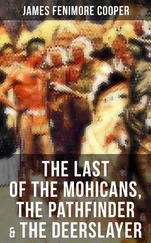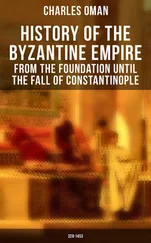Lars Brownworth - Lost to the West - The Forgotten Byzantine Empire That Rescued Western Civilization
Здесь есть возможность читать онлайн «Lars Brownworth - Lost to the West - The Forgotten Byzantine Empire That Rescued Western Civilization» весь текст электронной книги совершенно бесплатно (целиком полную версию без сокращений). В некоторых случаях можно слушать аудио, скачать через торрент в формате fb2 и присутствует краткое содержание. Год выпуска: 2010, ISBN: 2010, Издательство: Random House, Inc., Жанр: Старинная литература, на английском языке. Описание произведения, (предисловие) а так же отзывы посетителей доступны на портале библиотеки ЛибКат.
- Название:Lost to the West: The Forgotten Byzantine Empire That Rescued Western Civilization
- Автор:
- Издательство:Random House, Inc.
- Жанр:
- Год:2010
- ISBN:9780307407962
- Рейтинг книги:3 / 5. Голосов: 1
-
Избранное:Добавить в избранное
- Отзывы:
-
Ваша оценка:
- 60
- 1
- 2
- 3
- 4
- 5
Lost to the West: The Forgotten Byzantine Empire That Rescued Western Civilization: краткое содержание, описание и аннотация
Предлагаем к чтению аннотацию, описание, краткое содержание или предисловие (зависит от того, что написал сам автор книги «Lost to the West: The Forgotten Byzantine Empire That Rescued Western Civilization»). Если вы не нашли необходимую информацию о книге — напишите в комментариях, мы постараемся отыскать её.
Lost to the West: The Forgotten Byzantine Empire That Rescued Western Civilization — читать онлайн бесплатно полную книгу (весь текст) целиком
Ниже представлен текст книги, разбитый по страницам. Система сохранения места последней прочитанной страницы, позволяет с удобством читать онлайн бесплатно книгу «Lost to the West: The Forgotten Byzantine Empire That Rescued Western Civilization», без необходимости каждый раз заново искать на чём Вы остановились. Поставьте закладку, и сможете в любой момент перейти на страницу, на которой закончили чтение.
Интервал:
Закладка:
Only the threat of the Seljuk Turks at their rear prevented the Nicaean emperors from further exploiting Latin weakness; but in 1242, a terrifying Mongol horde suddenly appeared, and the situation dramatically changed. Smashing the Turkish army sent against him, the Mongol khan forced the Seljuk sultan to become his vassal and extracted a promise of an annual tribute of horses, hunting dogs, and gold. The Mongol horde seemed poised to descend on Nicaea next, but it unexpectedly withdrew the next year, leaving the Seljuks crippled in his wake. To the relieved Byzantines, it seemed as if God had delivered them from certain destruction, and perhaps even given them a powerful new ally. Nestorian Christians who had been expelled from the Byzantine Empire had reached Mongolia in the seventh century, and though the khans had yet to embrace a major religion, several high-ranking Mongols—including the daughter-in-law of Genghis Khan—were Christian. In any case, whether they were well disposed to Christianity or not, the Mongols’ timely attack finally left Nicaea free to pursue its dream of recapturing Constantinople.
Through careful diplomacy and military displays, Nicaea slowly built up the pressure on the tottering Latin Empire. By now the crusader kingdom had virtually shrunk down to Constantinople itself, and the capital lived under a perpetual shadow of gloom, with its deserted streets and dilapidated palaces. Its humiliated emperor Baldwin II was so impoverished that he’d been obliged to sell off the lead from the roof of the imperial palace—which was now in a tumbledown state of advanced decay—and in his desperate search for money had even begun to pawn the few relics that had survived the sack. By 1259, when a dashing young general named Michael Palaeologus was crowned in Nicaea, Baldwin was barely clinging on to power, and few doubted the general would recover the city. The only question was when.
Nicaea was not without its own turmoil. The thirty-four-year-old Michael Palaeologus had come to power only after the regent was brutally hacked to death during the funeral service of his predecessor, but by the time Michael was crowned on Christmas day, his empire was infinitely more powerful and vibrant than its Latin counterpart. In the summer of 1261 , Michael neutralized the threat of the Venetian navy by signing a treaty with their archrivals Genoa, and sent his Caesar, Alexius Strategopoulos, to see how strong Constantinople’s defenses were. When the Caesar arrived outside the city in July with eight hundred men, some farmers immediately informed him that the Latin garrison—along with the Venetian navy—was away attacking an island in the Bosporus. Hardly believing his luck, Strategopoulos hid until nightfall in a monastery near the Pege Gate, easily escaping detection by the laconic defenders. Upon discovering a small, unlocked postern gate nearby, the Caesar sent through a handful of men who quietly overpowered the guards and opened the main gate. On the morning of July 25, 1261, the Nicaean army poured into the city, shouting at the top of their lungs and beating their swords against their shields. Emperor Baldwin II was so terrified by the noise that he left the crown jewels behind, fleeing to the palace of the Bucoleon, where he was somehow able to find a Venetian ship and make good his escape. Within hours, it was all over. The Venetian quarter was burned to the ground, and the returning Venetian navy was too busy rescuing its loved ones to fight back.
For the Latins inside the city, there was no thought of resistance, only of panicked flight. Scattering in all directions, they hid in churches, disguised themselves as monks, and even leaped into the sewers to avoid detection. When they cautiously emerged, however, they found that there had been no massacre. The Byzantines had come home not to plunder but to live. The bedraggled Latins hurried quietly down to the harbors and boarded the returning Venetian ships, glad that Byzantines had shown more restraint in victory than their own crusading predecessors.
The incredible news reached Michael Palaeologus where he was asleep in his tent, nearly two hundred miles away. Refusing to believe that his forces had captured the city until he had seen Baldwin’s discarded scepter, Michael hurried to take possession of the capital that he had long dreamed of but never seen. On August 15, 1261 , he solemnly entered through the Golden Gate and walked to the Hagia Sophia, where he was crowned as Michael VIII. After fifty-seven years in exile, the Byzantine Empire had come home.
The city that Michael VIII triumphantly entered was a pale shadow of its former self. Charred and blackened houses stood abandoned on every corner, still sagging and in ruin from the sack more than five decades before. Its churches were despoiled and dilapidated, its palaces decayed, and its treasures dispersed. The formidable Theodosian walls were badly in need of repair, the imperial harbor was completely unprotected, and the surrounding countryside was devastated. Its weary citizens had little hope for relief from a throne that had seen—from Irene in 780 to Alexius Murtzuphlus in 1204—half of its occupants overthrown. Worst of all, however, the old unity of the Byzantine world had vanished—the splinters of the empire in Trebizond and Epirus remained stubbornly independent, sapping the already diminished strength of Byzantium. The only hope of salvation seemed to be from the West, but the Fourth Crusade had severely ruptured western relations.
If anyone had a chance of repairing the damage, however, it was Michael VIII. Not yet forty, he was energetic and vibrant, hiding a fierce intelligence behind a convivial smile. Boasting an impressive imperial lineage of no fewer than eleven emperors and three dynasties among his ancestors, he was well connected, able, and smarter than anyone else around him. His first task was to restore the city’s shattered morale, and he did so with a whirlwind of construction, repairing walls and rebuilding churches. In the upper gallery of the Hagia Sophia, the emperor commissioned a stunning mosaic of Christ flanked by Mary and John the Baptist—perhaps the finest piece of art that Byzantium ever produced. A massive chain was stretched across the imperial harbor to protect it from enemy vessels, and the moats around the land walls were cleared. Knowing the value of propaganda, the emperor designed a new flag and sent it fluttering from every parapet and tower in the city. Though the eagle had been the symbol of the Roman Empire since Gaius Marius had chosen it thirteen hundred years before, most banners before Michael bore either Constantine’s cross or the Chi-Rho —the first two Greek letters of Christ’s name. Now the emperor added a great golden eagle, double-headed with two crowns—one for the interim capital of Nicaea and one for Constantinople. Those who saw it could swell with pride and remind themselves that Byzantium had been a mighty empire embracing two continents, looking both east and west. Perhaps under the dashing Michael VIII it would be so again. The imperial enemies were scattered and disunited, and an immediate offensive just might catch them on their heels.
At the head of his small, battle-hardened army, Michael VIII had soon pushed back a marauding Bulgarian army and forced the Byzantine despot of Epirus to submit to the empire. By 1265, he had conquered most of the Peloponnese from its Latin overlords and even managed to clear the Turks out of the Meander valley. The next year, however, a new player appeared on the international stage, and everything was thrown into confusion.
The Norman Kingdom of Sicily had dominated Italian politics for a long time, but by 1266 its energy was exhausted. Pope Urban IV, wanting a friendlier hand at its helm, invited Charles of Anjou, the younger brother of King Louis IX of France, to seize the kingdom. If the pope wanted a neutral power to his south, however, he could hardly have made a worse choice. Charles was cruel and grasping, and after beheading his sixteen-year-old opponent in a public square, he immediately began planning to enlarge his domains. His schemes were given an unexpected boost when Baldwin II, the exiled and rather pathetic Latin emperor of Constantinople, offered to give him the Peloponnese in exchange for help regaining the throne. The delighted Sicilian king immediately began levying heavy taxes to support the war effort and searching for allies, forming an anti-Byzantine league with Venice.
Читать дальшеИнтервал:
Закладка:
Похожие книги на «Lost to the West: The Forgotten Byzantine Empire That Rescued Western Civilization»
Представляем Вашему вниманию похожие книги на «Lost to the West: The Forgotten Byzantine Empire That Rescued Western Civilization» списком для выбора. Мы отобрали схожую по названию и смыслу литературу в надежде предоставить читателям больше вариантов отыскать новые, интересные, ещё непрочитанные произведения.
Обсуждение, отзывы о книге «Lost to the West: The Forgotten Byzantine Empire That Rescued Western Civilization» и просто собственные мнения читателей. Оставьте ваши комментарии, напишите, что Вы думаете о произведении, его смысле или главных героях. Укажите что конкретно понравилось, а что нет, и почему Вы так считаете.












